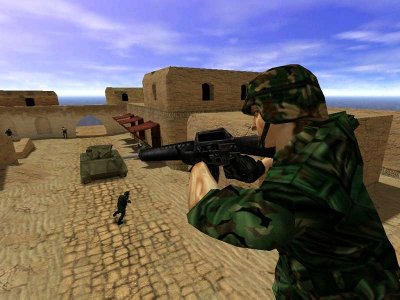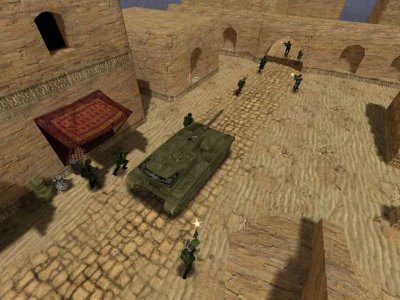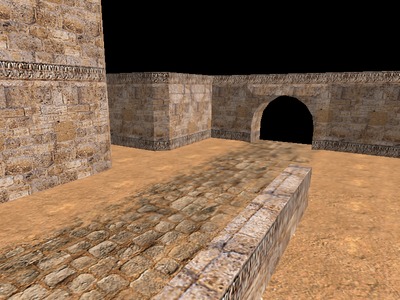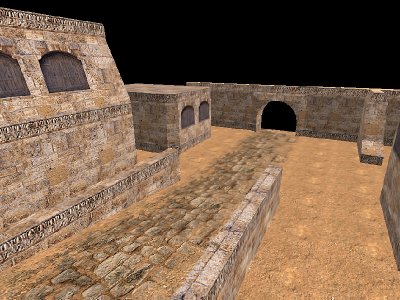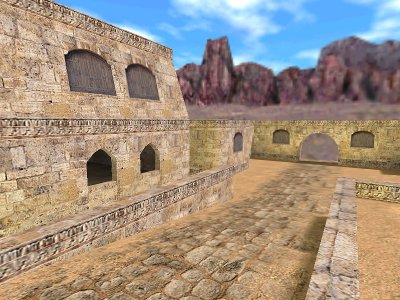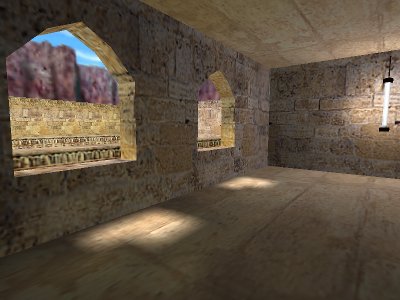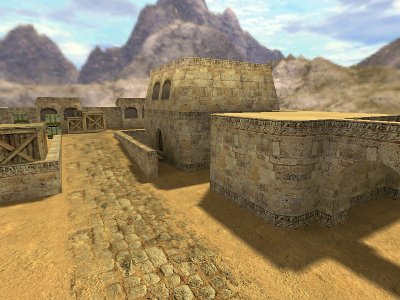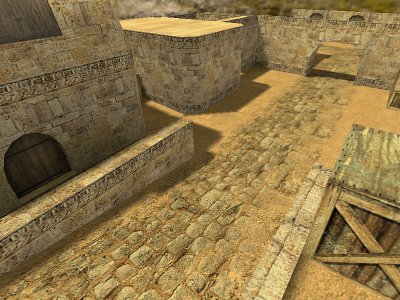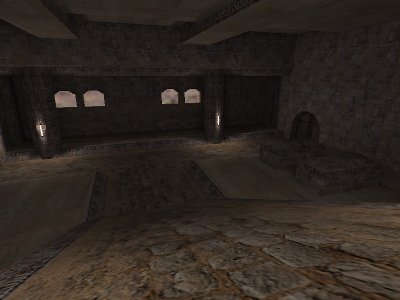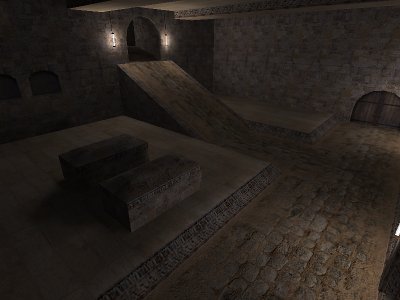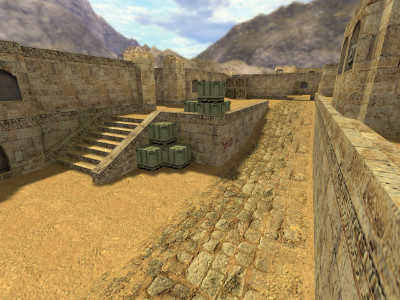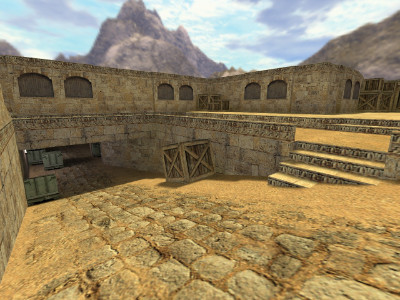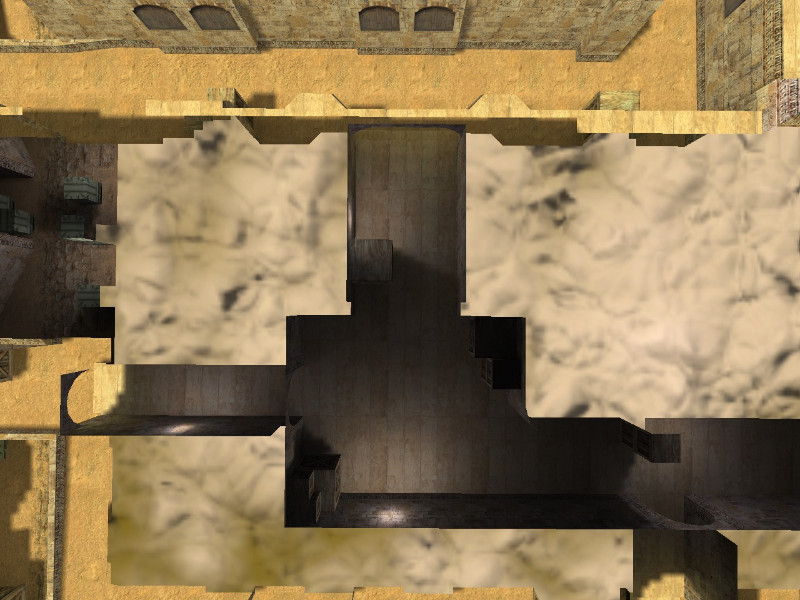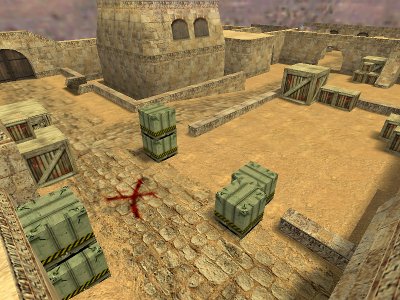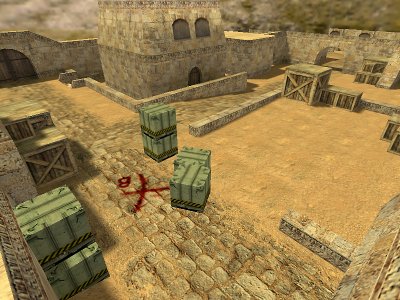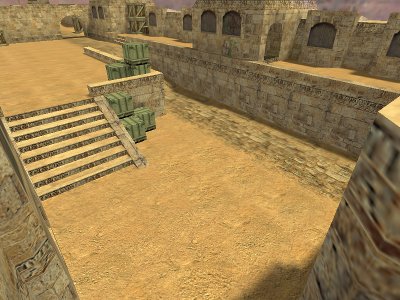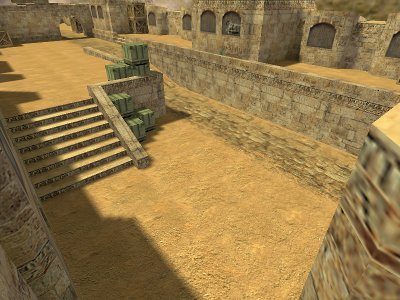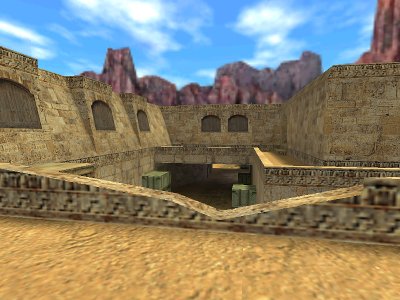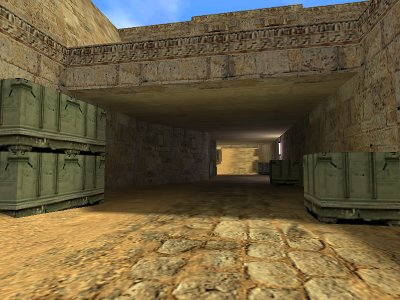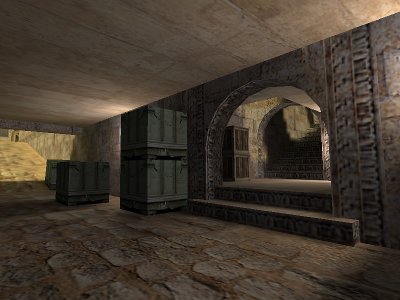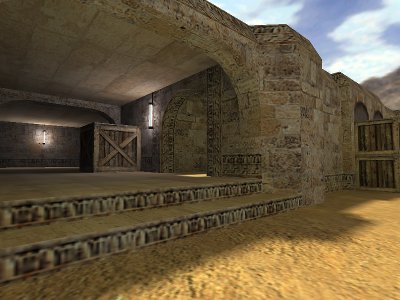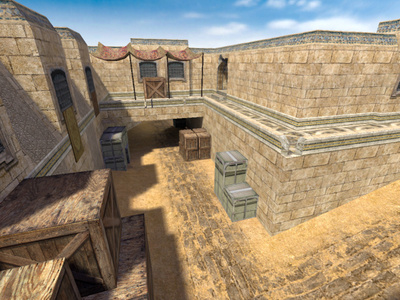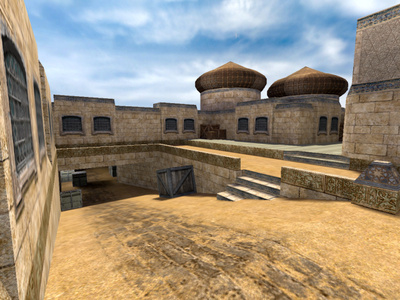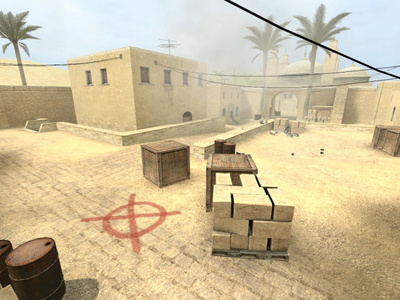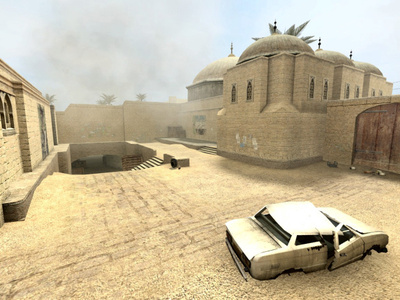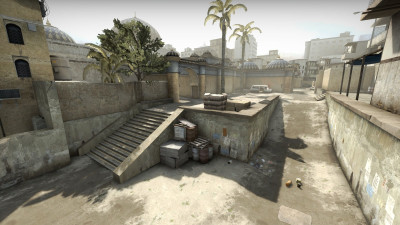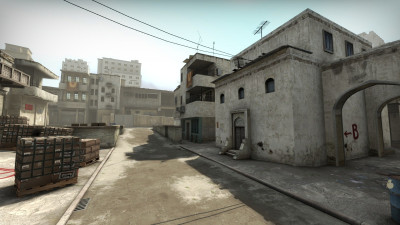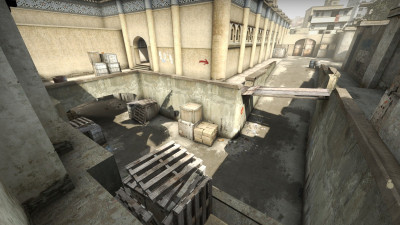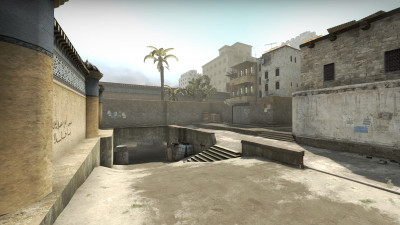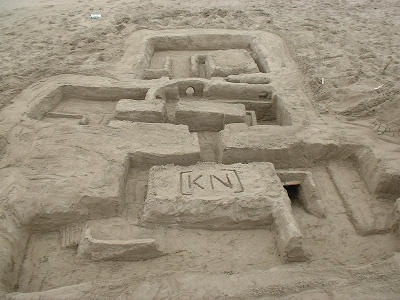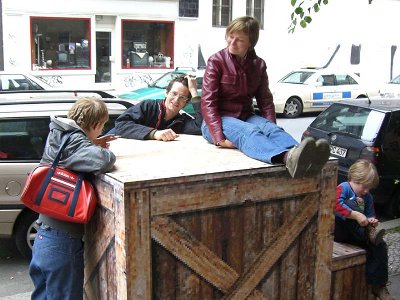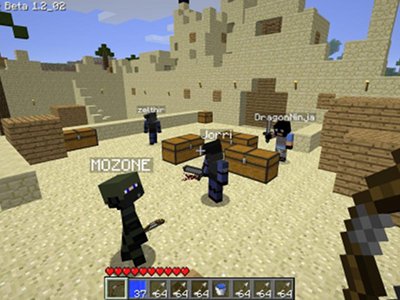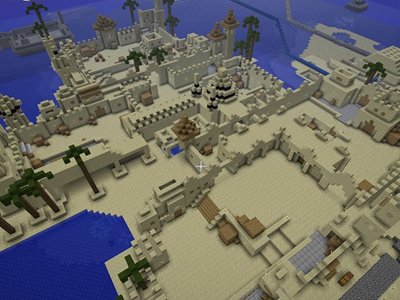For many FPS players Dust - and the later Dust 2 - are the quintessential Counter-Strike maps. They’ve been featured in nearly every major Counter-Strike tournament, and been responsible for countless millions virtual deaths, bomb detonations and defusals. But these maps actually owe their existence to Team Fortress 2 - a game that was released eight years after Dust became a staple of the Counter-Strike map rotation.
Time Travelling
It started in the summer of 1999, Suffolk, England. I was 16 years old, recuperating from end-of-year exams and enjoying my newfound freedom from school work. Half-Life was only a few months old, yet was scooping up more ‘Game of the Year’ awards than there were game magazines, leaving gamers desperate to know what Valve Software were going to make next.
Thankfully, news broke that Valve had hired the team behind ‘Team Fortress’, a free mod for Quake that added class-based team multiplayer to the game. Like any responsible teenager, I’d spent more hours sat staring into a screen zooming around dodging rockets, slinging grenades and capturing the flag than I had with my head stuck in schoolwork, much to the chagrin of my parents. Their next project? A sequel, excitingly titled ‘Team Fortress 2’.
It seemed that whilst I had been busy ambushing my future educational prospects, behind closed doors Valve had been hammering away at updating and upgrading Team Fortress for a new generation of hardware. News of Team Fortress 2 was rare and sporadic, but occasionally a tidbit here or a screenshot there would nervously peer out to an excited but nervous audience of TF fans.
Before too long, a handful of screenshots started their steady journey around the gaming websites of the late nineties. Two particular screenshots leapt out at me:
The seed had been sown.
Meanwhile, a new Half-Life modification known as ‘Counter-Strike’ had been picking up a steady stream of players. In the autumn of 1999, Minh ‘gooseman’ Le and Jess Cliffe released its second beta - and it supplanted Team Fortress to become my new addiction. It came with a texture pack of urban textures (‘cstrike.wad’) that, upon discovery, I set about making a map with - this became ‘cs_tire’, a hostage rescue map set in (of all places) a retirement home. Surprisingly, this map was deemed good enough to be included in the third beta release of Counter-Strike, and Jess subsequently asked me if I’d be interested in making a map for the fourth beta. He was very keen to hook me up with their texture artist to help me make something absolutely and completely original.
Jess introduced me to artist Chris ‘MacMan’ Ashton - the same artist behind the urban texture set used in my retirement home map - and we got to work creating a new, totally original Counter-Strike map. Unfortunately it was too late to save me from TF2’s influence and I asked for these instead:
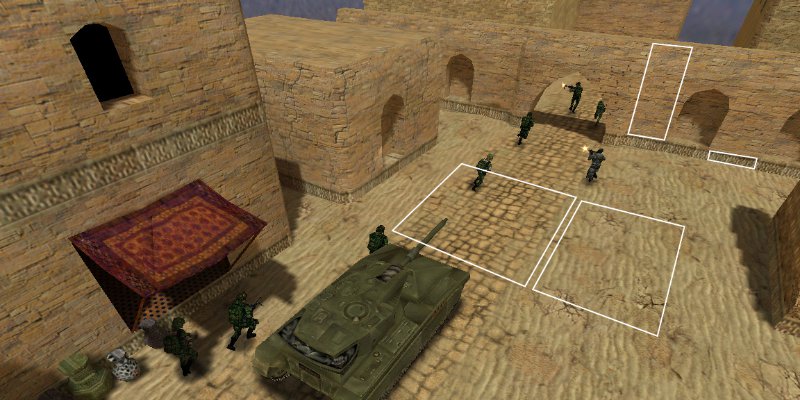
Undeterred by my complete lack of originality, Chris quickly got back to me with beautiful lookalikes. While not exact replicas, I selfishly became completely infatuated with them, just like I had the screenshots they were based on . I quickly bundled them all together into my own texture pack and called it “cs_dest.wad” - shorthand for “Destiny”.
With these TF2-alike textures I could finally make a map and pretend I was playing Team Fortress 2, but something was wrong. I felt guilt - TF2 wasn’t even out yet and I was already trying to sap all the effort Valve had been putting into it. It was akin to snatching a duckling from under its mothers beak. “But surely”, I thought, “Valve wouldn’t mind one me making one small map for one small mod for their one and only published game? A map that maybe only a handful of people would ever play?”
I marched on.
Copy and Paste
Starting the map was the easy bit - the first area boasted a long road flanked by buildings, leading to an archway and a wall dividing it in two, just like I’d seen in the screenshots. I decorated every building and wall with ornate trims along the top or bottom, again aping TF2, as I tried my hardest to evoke the same sense of place, desolation, and scale. These features would go on to define the underlying architectural style of Dust.
My effort wasn’t quite identical to the map featured in those coveted TF2 screenshots, but it was close enough, and - somewhat more importantly - it was a start.
The arched doorways became a hallmark of the Dust theme - a Dust map is simply not Dust without at least two or three arches dividing the map into distinct zones. Creating the first one was at the time a great test of my technical mapping ability, and I struggled for a little while before landing on a technique that worked. My design eschewed the Reuleaux triangle shape of the TF2 arches for a simpler semi-circle, partly because it was simpler, but primarily to ease player passage through them. I extruded the arches from their adjoining wall - lifted straight from the screenshots.
I considered against copying the screenshots verbatim for fear of upsetting Valve, and so started guessing how the rest of the area should look. I’d already created a raised platform, and had decided that this could be the area that the Counter-Terrorist team would spawn in at the start of the match. This necessitated defensive measures to protect their spawn area, so I made some windows:
Not only did they look hideous, but the windows didn’t give the defensively-advantageous views I wanted the CT team to have. Nor did they fit with the intended gameplay. I didn’t want to encourage the CTs to hold back, and removed them - although in all honestly, at this point I really didn’t know where the map was going.
Under the Influence
Side-by-side, the TF2 ‘influence’ is plain to see:
In many respects, the TF2 screenshot looks nicer to me - smoother and softer than the harsh edges of the Dust buildings. I was far more comfortable working with standard geometric shapes, 90 degree corners and 45 degree angles, which is why Dust looks far boxier in comparison to the TF2 screenshot it was based on.
That was the easy part done - after all, Valve had already created this much of the map for me and all I’d had to do was copy it. But what I had wasn’t much - it was barely enough for a one-on-one deathmatch, let alone two teams of eight players gunning it out. Worse still, there were no more screenshots to use for ‘inspiration’ - I had to make the rest of the map off my own back and imagination.
Extrapolation
Having nailed down the design of the first area, producing the rest of the map was merely a case of extrapolating it into a complete, playable environment. However this was much easier said than done - the next section of the map proved rather more challenging.
I had created a T-junction out of the CT spawn, but struggled to know what to do with it. My past mapping experience was mostly creating tight interiors rather than not vast exteriors, and so I was feeling very lost. Desperate, I shoe-horned a bend in the road leading to a downward slope, and at the end of it - an underground cavern.
It didn’t work, of course. While the CT spawn area was light and airy, this giant room was gloomy, boxy and felt dead compared to the sunny exterior I’d already made. Observing it also lacked any gameplay potential, I swiftly deleted it. Dust would be an outdoor map.
I was still stuck. It’s at times like these where working without an initial design can prove extremely difficult. You look at what you’ve got, and struggle to see where to take it, knowing that a step in one direction is a step away from a solution in another direction - and you don’t know which will turn out better. It can be very tough and incredibly tempting to just scrap everything and start again. I’d made all my previous maps one room at a time, making it up as I go along with precious little pre-planning, and they had gone reasonably well. I had to hope I could do the same again.
Mercifully, that’s exactly what happened.
Within just a few hours - and seemingly out of nowhere - the Terrorist spawn area was complete. I was far happier with this side of the map, perhaps a product of becoming comfortable with the visual and architectural style. The shallow decline into the underpass is perhaps one of my favourite aspects, both aesthetically and as a player who spent many hours armed with a Steyr Scout at the crest popping off opponents' heads.
At one point I planned an alleyway from the Terrorist side of the underpass that fed around to the CT ‘sniper nest’, but this path seemed like it would be too long, too linear, and simply too dull. I just blocked it up with crates instead, still visible in the original version of the map (and the screenshot above.)
Dust’s central hallway was pivotal in tying all these pieces together. Unfortunately, I can recollect very little about its creation, bar my explicit efforts to ensure players couldn’t see all the way through it from one end to the other. Every crate found in the intersection was strategically positioned to cut off lines-of-sight and improve performance. It was in this corridor that each team would typically meet, and so it needed to be fair, and balanced, with a slight defensive bias.
In retrospect, it’s clear the upturned ‘T’ shape of this corridor - which gave the CT team two points from which to defend against the single Terrorist entrance point - played an important role pacing each team. A good CT team would hold steady in these locations, forcing Terrorists to check both corners before advancing. However, the Terrorist team had a similar advantage if CT’s became over-confident and tried advancing too far.
Getting this balance of opportunity right came down to timing. The aim was to ensure both teams caught first sight of each other in this corridor. Knowing that most players will start running the second the match begins, I did the same, timing how long it took to go from each team’s spawn area to the central corridor. By making sure each team had exactly the same distance to run I could dictate exactly where first contact would be most likely to happen.
Bomb Planted
Despite the map layout being largely complete, I’d paid very little attention to the core gameplay. Dust would be one of the very first ‘Bomb Defusal’ maps, a new gmetype that was due to be introduced at the same time as the map itself (all previous CS maps had featured hostage rescue.) No one had played a Defusal map before - least of all me - and so I had to rely on guesswork and logic to place the spawns and bomb locations.
Bomb Spot A was easy to place - the courtyard area had no purpose otherwise - but Bomb Spot B proved more difficult. I thought about putting it the underpass. This suited better - it was equidistant between the two spawns, and I thought offered a reasonable amount of cover. So it went there.
Bomb location decided, I zipped up the map and fired it towards Cliffe for the first round of playtesting. He immediately suggested that the bomb spot below the underpass should be moved directly in the CT spawn - a change that was undoubtedly crucial to the map’s success.
The problem was I’d been treating this brand-new ‘Defusal’ gametype as if it was one I knew already - Capture the Flag - except in this CTF mode the flag (the bomb) started at the Terrorist spawn. But Defusal wasn’t Capture the Flag. In fact, it was so utterly different that hardly a comparison could be drawn. Placing the bomb in the CT spawn hadn’t even crossed my mind. I made the change, and sent it back for playtests.
Playtesting is an important stage of any map’s development cycle. While thoughtful logic and engineering are incredibly important to help ensure a map’s success, player feedback is critical. There’s little way of knowing exactly how a map will play when faced with real people. It’s playtests that uncover deep and subtle-but-damaging flaws that need fixing before release - if the map is even fit to be released at all.

I didn’t get to play in the playtests (by virtue of being in a different timezone) but I heard that they went well enough to be included in BETA 4. To have one map (‘cs_tire’) already in the official map rotation was great, but to have two? The pressure was mounting. What if it didn’t live up to people’s expectations? Would people even take to this new ‘Bomb Defusal’ mode? What if players didn’t like the sunny golden demeanor of Dust, and really did prefer dark, gritty urban maps?
A few days later, on the 5th November of 1999 - a Friday - I got my answer. BETA 4 was released as I slept. Saturday morning arrived, and I - skipping breakfast - rushed to download the new beta, just like everyone else had done hours before. There were already hundreds of servers and on them thousands of people were already planting and defusing bombs on the map I’d designed, and I’d not even got to play it myself yet.
It seemed as though Bomb Defusal mode was a hit, and thousands of players were already enjoying the change of pace from hostage rescue maps. But how about Dust? Well, this was the day that the first “Dust 24/7” server appeared…
…and players seemed to like it.
Getting BETA
Dust underwent changes in almost every subsequent release of CS during the BETA phase. These changes were frequently somewhat speculative, more often they were aesthetic, and sometimes they changed the game play entirely.
BETA 4
Comparing the first version of Dust to CS 1.6’s shows the major differences that were made in its lifetime. BETA 4 Dust had far fewer crates and cover than in CS 1.6 - all added to help balance the map and embellish defensive/offensive strategies. Aesthetically, CS 1.6’s Dust is also far cleaner and warmer, having benefited from a custom skybox and tweaked sunlight.
BETA 5
The BETA 5 version of Dust consisted of both aesthetic and gameplay changes. One seemingly small gameplay change was introduced in the form of a crack in the wall of the CT sniper nest overlooking the underpass. The intention was to expose CT snipers, making it easier for Terrorists to advance through the underpass. I reinforced this principle by adding more crates in the underpass as cover, strategically placed to let them get close enough to toss a grenade into the sniper nest.
The crack in the wall backfired. Rather than hinder CT snipers it had helped them by offering a wider, unobscured view of Terrorists entering the underpass. Miraculously, the full wall was restored in BETA 6.
BETA 6.1 and 6.5
BETA 6.1 contained a small change to spawns that had big consequences. I thought the map had become unbalanced in the favour of the Terrorist team, and wanted to find a way to address this advantage. My fix involved moving the CT spawns forward by a few metres to push back the first line of contact between the two teams.
The exact placement of Dust’s player spawns had always been crucial in ensuring balance, so I knew that tweaking them could have large repercussions. However, this was one tweak too far - once 6.1 was released it was clear the change the balance had become worse, not better.
What happened? The change had made it easier for CTs to hold down the hallway, and harder for the Terrorists to rush the bomb site - all exactly as intended. However, the balance was now slightly too far in the CTs favour, and while some players welcomed this change, it was an overall worse experience for most. In BETA 6.5 the CT spawns were reverted back to their original positions.
(BETA 6.5 also introduced my third Counter-Strike map, ‘de_cbble’. It was very nearly a castle.)
Retail 1.0
In April 2000, Valve bought Counter-Strike and secured the right to include Dust in a physical, boxed retail version of the game. It was hard to believe this small map I’d made in my spare time less than a year before would be appearing on store shelves. Yet, on the 1st November 2000 - days before Dust turned one-year-old - that’s where it was. I was now 17, and Dust was now my first published work.
(A few months later my fourth CS map - the inventively titled ‘de_dust2’ - was added in CS 1.1. You can read about it here: The Making Of: Dust 2)
Rejected Ideas
Dust didn’t see any further changes after 1.0. The map was about as good as I could make it without the risk of alienating players who were fans of the map, and I really didn’t want to rock the boat. However, that’s not to say I didn’t toy with a few ideas…
The major change that I almost made at CS 1.1 time would have changed the dynamics of the entire map destroyed many proven strategies. I thought a new route directly from the underpass to the very centre of the hallway would help Terrorists form a firmer front-line, and encourage a more defensive strategy.
In retrospect, I think it would have just become the fastest route for Terrorists to reach the underpass, undermining and deprecating a large area of the map in the process. It would have removed one of the dynamics that made the underpass so fun.
(Note this is not the same as the staircase added to Dust in CS:GO, which connects the platform above the underpass directly to the bottom. I believe the CS:GO solution is far better suited to Dust than my original plan was.)
24/7
Dust was once the most-played FPS map in the world, both in terms of the number of concurrent players, and the amount of time those players spent in the map. There were thousands of “Dust 24/7” servers, and the map became particularly popular amongst newbies, despite falling out of favour from clan matches. Dust turned out to be the perfect place for new players to learn the rules of the game, without being distracted by map complexity.
There is no way to know how well the map would have done if some of the changes mentioned in this article remained - for example, the bomb site in the underpass, the sniper house, or the stairs between the underpass and the hallway. I expect they wouldn’t have worked in the maps favour.
Ultimately, it’s hard for me to claim I knew what I was doing as I pieced Dust together. I attribute its success more to incredible luck and lack of imagination more than any skill I possess. If anything, I learnt more from Dust post-release (and in writing up these memories!) than I knew when I was making it.
Counter-Strike: Condition Zero
In March 2004 Valve released Condition Zero, an updated version of Counter-Strike that included a single-player mode and updated versions of all the popular maps from the main game. Its version of Dust shared much in common with the original, being largely based on the original brushwork. The map notably featured more pronounced structural detail supported by an expanded and more colourful palette.
This version of the map was the product of Ritual, although some finishing touches were added by Valve just before release of the game. The Levelord played a hand in the renovation.
Counter-Strike: Source
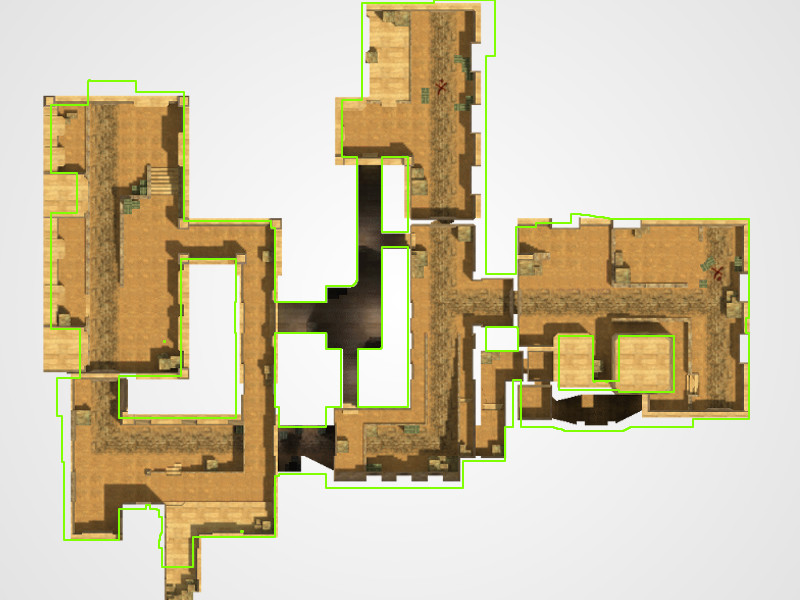

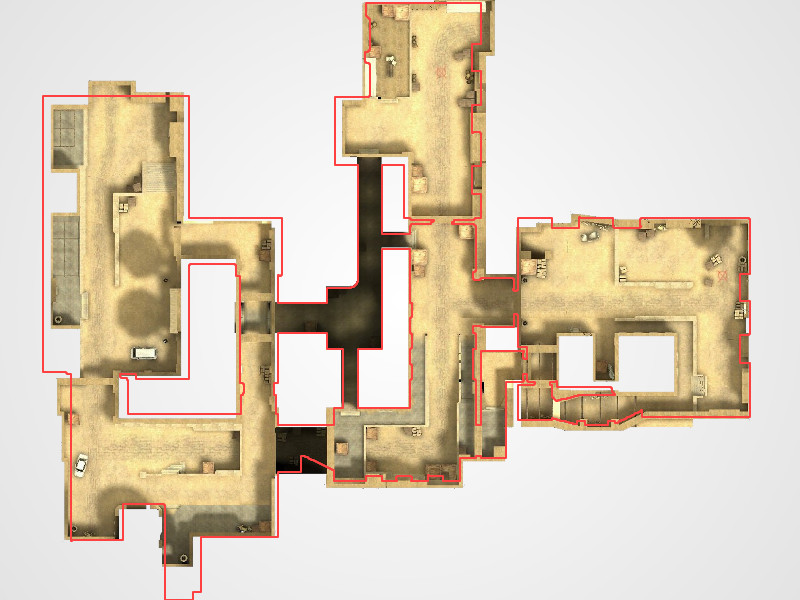
In November 2004 - mere months after the release of Condition Zero - Valve released Counter-Strike: Source, a completely refreshed and revamped version of Counter-Strike based on the Source engine.
This renovation of Dust was done at Valve by Kristen Perry and Ido Magal who were given the unenviable job of determining appropriate architectural references for Dust based upon the Condition Zero version. I think they nailed the look completely - maintaining the golden tones everyone was used to, embellishing the few details that were there and giving Dust the kind of ambience that it had always lacked. My reaction when I first saw what they had done was nothing short of complete astonishment and amazement. I was proud of what Dust had become and ever grateful to those who had helped get it there.
Counter-Strike: Global Offensive
The CS:S version of Dust caused my jaw to drop, but the iteration in CS:GO floored me.
This version was developed by Valve and Hidden Path Entertainment and evidently based on the proportions set by the CS:S version of the map (many CS:S assets can be seen around the map, albeit in updated forms). This version heralded the most major layout changes to the map since the original release, featuring a bridge across CT side of the underpass, and a staircase by the underpass, refreshing Dust for competitive play and bringing it in line with more recent maps.
At a glance these changes bear a resemblance to one of my “rejected ideas” above, but only in concept. The underpass’s linearity always posed a problem due to its length, and Valve clearly agreed that a third exit right underneath the platform was necessary. But unlike my solution, which would have drawn players right into the centre hallway, Valve opted to put the underpass passage on the opposite side, directing players up to the far end of the platform.
It’s clearly the better design and one I wish I had thought of when I still had the chance!
Meat-Space
Dust has also manifested itself in real, physical forms…
I still don’t know who was responsible for the sand castle, but the real-life crates were by Aram Bartholl, a Berlin-based artist who is also planning to create a life-size Dust replica.
And then, of course, there’s Minecraft:
This Minecraft version of Dust was made by users of the cdg.net forums, who have also been recreating other popular CS maps.
In Closing
To this day I am still amazed that Dust was as successful as it has been, and I have a hard time believing that I actually created it at all. But, looking back, its success is hardly surprising given those who helped it along the way, from Minh Le and Jess Cliffe’s invitation and support, to Chris Ashton’s painterly skills, the feedback from players, through to Brian Martel, Richard Gray, Kristen Perry, Ido Magal, and a whole plethora of talented behind-the-scenes clever clogs who I’ve never had the pleasure of meeting, but deserve far more credit than I could ever give.
Also, of course, ultimately I have to thank Valve Software for the idea I stole in the first place, and without which none of this would have ever happened. I hope they didn’t mind.

